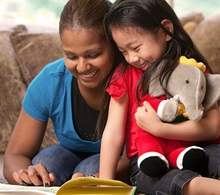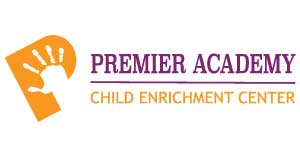 90% of parents cited academic preparedness as being the most important factor in their child’s quality childcare. They want to ensure that their children are prepared to meet or exceed academic expectations and possess the ability to apply their skills in reading, writing and math.
90% of parents cited academic preparedness as being the most important factor in their child’s quality childcare. They want to ensure that their children are prepared to meet or exceed academic expectations and possess the ability to apply their skills in reading, writing and math.
Teachers believe that children should enter Kindergarten with an ability to understand broader language and math concepts, as well as to be prepared for the social and emotional aspects of school. In fact, most teachers indicate they believe that social and emotional preparedness are the most important lessons of a child’s preschool experience in order for them to be ready for academic success in Kindergarten.
- Teachers agree that the most important indicators of a child’s social and emotional readiness for kindergarten are readiness to accept new responsibilities and independence; excitement for learning; an ability to make new friends; and showing respect towards others.
- Most teachers believe a child’s daycare experience plays a critical role in the child’s preparedness for school.
There’s no reason for parents to be worried about school readiness. Children who come from homes where parents or siblings read, spend engaged time with their children, value literacy, and/or have some social interactions with other children in child care, playdates or groups, or preschool are usually well prepared for kindergarten.
But there are some common myths of which to be aware.
- Myth #1 – Learning the ABC’s is crucial to school readiness.
The Truth: While this is important, reciting the ABC’s is really about memorization. It’s more important that children recognize letters and identify their sounds to prepare for school. - Myth #2 – Children need to count to 50 before going to kindergarten.
The Truth: Again while it is important that children understand the order of numbers, when it comes to school readiness, it is far more important to understand the idea of 1-to-1 correspondence (each number counted corresponds to an object, person, etc.) and understanding quantity. - Myth #3 – The more teacher-directed the learning, the better.
The Truth: Children understand concepts more fully when they are engaged in exploration and learning versus being told by a teacher. Teachers should be there to help guide learning. - Myth #4 – The more a childcare program looks like the school we remember as a child the more children will learn.
The Truth: Young child learn best in an environment that allows them to make choices; to select their own materials for at least part of the day; and empowers them to try new things with a teacher who guides the learning. - Myth #5 – Children need quiet to learn.
The Truth: Children need a language-rich environment where adults provide responsive language interactions and where vocabulary is regularly introduced. - Myth #6 – Learning to write is all about letter formation.
The Truth: While letter formation is one part, even more important is understanding the idea of recording one’s ideas on paper. When a child makes some scribbles and says “This is my daddy,” write your child’s words on the picture and she will begin to make connections between spoken and written words.
Learning some “school skills” like lining up and raising hands before transitioning to school will certainly help make the transition to formal schooling easier; however, the best way to prepare your kids to enter school is giving them the chance to fully explore and experiment in an environment with caring adults who guide, support, and extend their learning.

